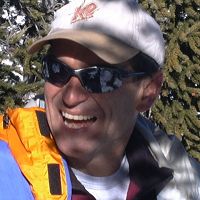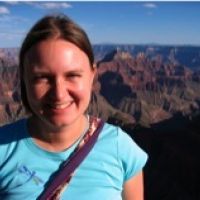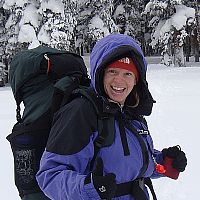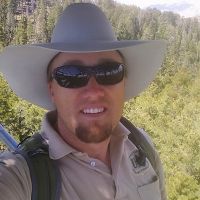Pelletier et al., 2010
Coevolution of topography, hydrology, soil development, and vegetation in sky islands of the southwestern United States.
Pelletier, J.D., Rasmussen, C., Breshears, D.D., Brooks, P.D., Chorover, J., Huxman, T.E., Lohse, K.A., Meixner, T., McIntosh, J.C., Kurc, S.A., Schaap, M.G., Swetnam, T., Troch, P.A. (2010)
AGU Fall Meeting Abstract EP42A-03.
-
Catalina-Jemez, INVESTIGATOR
-
Catalina-Jemez, INVESTIGATOR
-
Catalina-Jemez, INVESTIGATOR
-
Catalina-Jemez, INVESTIGATOR
-
Catalina-Jemez, INVESTIGATOR
-
Reynolds, INVESTIGATOR
-
Catalina-Jemez, INVESTIGATOR
-
Catalina-Jemez, INVESTIGATOR
-
Catalina-Jemez, INVESTIGATOR
-
Catalina-Jemez, INVESTIGATOR
-
Catalina-Jemez, INVESTIGATOR
Abstract
The sky islands of the southwestern U.S. offer a unique opportunity to study the coevolution of landscape processes in areas of similar rock type and tectonic history but a wide range of climates. In this study we compile high-resolution, spatially-distributed data for the available energy to drive rock weathering and other landscape processes, i.e. the Effective Energy and Mass Transfer (EEMT) variable of Rasmussen and Tabor (2005), together with data for LiDAR-derived above-ground biomass, soil thickness, water storage potential, hillslope relief, and valley density in the Santa Catalina and Pinaleno Mountains, two predominantly granitic ranges in southern Arizona. Strong correlations exist among these variables such that warm, dry, low elevation portions of these areas are characterized by low biomass, thin soils, low water-storage potential, steep slopes, and high valley densities. Cooler, wetter, higher-elevation portions have systematically higher biomass, thicker soils, higher water-storage potential, gentler slopes, and lower valley densities. Moreover, all of these variables have a nonlinear dependence on climate/elevation. Slope gradient and aspect also exert an important control on these variables, with steep, south-facing hillslopes characterized by drier-than-average conditions for a given elevation and north-facing slopes associated with wetter-than-average conditions. We hypothesize that these correlations partly reflect coevolutionary positive-feedback mechanisms among these processes that amplify differences in rates set by climate, tectonics, and rock type. For example, thicker soils with higher water storage potential that form at higher elevations/north-facing slopes tend to have greater biomass, causing lower runoff ratios, lower rates of slopewash and fluvial erosion, and increased rates of colluvial transport, thereby promoting thicker soils, lower-gradient slopes, and lower valley densities. Thicker soils and higher water storage potentials, in turn, promote greater biomass in a positive feedback. To test this hypothesis, we developed a landscape evolution model that couples soil development, the partitioning of rainfall into runoff, infiltration, and evapotranspiration, vegetation growth, and geomorphic processes (colluvial and fluvial transport) over geologic time scales. Numerical experiments with this model can be run for a range of input data for climate, tectonics, and rock type. Across a climate gradient similar to that of the sky islands of the southwestern U.S., the model self-organizes into states similar to those observed in the Santa Catalina and Pinaleno ranges, i.e. higher biomass, thicker soils, higher water storage potential, lower relief, and lower valley density at higher elevations/north-facing slopes. The model exhibits similar nonlinear relationships among landscape variables across the elevation/climate gradient, lending support to the hypothesis that positive feedback mechanisms contribute to the observed nonlinearity.
Citation
Pelletier, J.D., Rasmussen, C., Breshears, D.D., Brooks, P.D., Chorover, J., Huxman, T.E., Lohse, K.A., Meixner, T., McIntosh, J.C., Kurc, S.A., Schaap, M.G., Swetnam, T., Troch, P.A. (2010): Coevolution of topography, hydrology, soil development, and vegetation in sky islands of the southwestern United States. AGU Fall Meeting Abstract EP42A-03..
Explore Further











